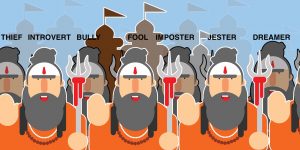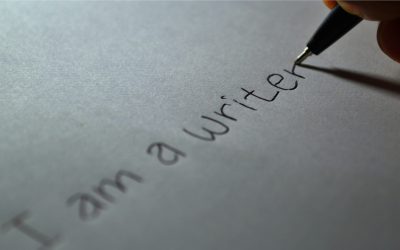Archetype is defined here as a type of person whose typical behaviors are the same as those of others of the same type. For example, cowards exhibit some typical behaviors. They fear danger, lack courage, and avoid or quit dangerous situations.
Before I list 79 archetypes and a way to use them, here are some of their benefits in fiction.
Why Archetypes Are Useful in Building Character
They can help to
- define the roles of characters.
- narrow our characters so they’re not like all the other characters in our story.
- expand and deepen our characters so they are multidimensional.
- add interest to a character when using a distorted version of an archetype.
- make a character original when choosing an unexpected archetype.
- make realistic and identifiable characters because archetypes are built on real typical behaviors.
- create conflict, tenderness, and tension when characters appear together in groups because each has a unique mixture of archetypal behaviors.
- remind us to make characters act, react, and make choices in accordance with or occasionally the opposite of their archetypes.
- bring out flaws in a character that he can conquer by story’s end.
Story Characters
- Protagonist
- Antagonist
- Love Interest
- Mentor
- Sidekick
- Other Character
An Easy Way to Use Archetypes
- For each character above, choose two to three archetypes from the list below. Mix up archetypes across characters.
- Start with the Protagonist and understand from his combination of archetypes, how he thinks, acts, and reacts and what he dislikes in others.
- For the Antagonist, perhaps he’s the epitome of what the protagonist dislikes. Or they have characteristics from a same archetype that helps them understand each other.
- Since readers like the idea that opposites attract, choose at least one archetype for the Love Interest that’s opposite to one of the Protagonist’s.
- The Mentor doesn’t have to be wise. Possibly, he’s accomplished in the area where the Protagonist is weak.
- The Sidekick could be a combination of archetypes, some the Protagonist likes and others he tolerates. Possibly, the only thing that makes them a team is how loyal the sidekick is.
Archetypes
|
Addict |
Hero |
Masochist |
Rebel |
Survivor |
|
Analyst |
Heroine |
Masquerader |
Reformer |
Teacher |
|
Anti-hero |
Imposter |
Mediator |
Revolutionary |
Tempter |
|
Artist |
Innocent |
Messenger |
Rival |
Thief |
|
Benefactor |
Introvert |
Monster |
Rogue |
Thrill-Seeker |
|
Betrayer |
Invalid |
Mother Figure |
Ruler |
Trickster |
|
Bully |
Investigator |
Narcissist |
Sage |
Tyrant |
|
Rule Keeper |
Jester |
Outlaw |
Samaritan |
Victim |
|
Corrupter |
Know-it-all |
Parent |
Scapegoat |
Villain |
|
Coward |
Leader |
Peacemaker |
Scholar |
Waif |
|
Dreamer |
Loner |
Penitent |
Seductress |
Warrior |
|
Enabler |
Lover |
Perfectionist |
Show-off |
Watcher |
|
Explorer |
Loyalist |
Pessimist |
Skeptic |
Womanizer |
|
Feminist |
Macho-man |
Pleaser |
Slave |
Youth |
|
Fool |
Manipulator |
Predator |
Spoilsport |
|
|
Go-Getter |
Martyr |
Psychopath |
Superpower |
Example:
Protagonist: an analyst, an explorer, and an imposter.
Sidekick: an addict, pessimist, and loyalist.
What came to mind is:
Dickson is a young college man. One summer, he poses as a census taker and travels from town to town to collect data and write a paper on the perfect single woman. While he charms young women, he records 1-10 ratings for twenty traits he deems important.
 Dickson’s teenage brother, Dean, travels with him. The only things that placate and keep Dean with Dickson is the promise of receiving a used jeep and a daily supply of three six-packs of diet soda loaded with caffeine. He believes Dickson won’t find the perfect women going door-to-door, and he reminds his brother daily of the fact. But as long as he has his caffeine fix, he faithfully keeps the truck running in case he spots a cop cruiser or Dickson’s interview ends badly.
Dickson’s teenage brother, Dean, travels with him. The only things that placate and keep Dean with Dickson is the promise of receiving a used jeep and a daily supply of three six-packs of diet soda loaded with caffeine. He believes Dickson won’t find the perfect women going door-to-door, and he reminds his brother daily of the fact. But as long as he has his caffeine fix, he faithfully keeps the truck running in case he spots a cop cruiser or Dickson’s interview ends badly.
79 archetypes and how to use them to create interesting characters. Click to tweet.
What archetypes could you pull together to make an interesting character?




 RSS - Posts
RSS - Posts



What great reminders, hints, and chart! Thanks, Zoe. I remember at an RWA conference once, the speaker mentioned giving the villain at least one redeeming quality, So I had mine love his dog LOL. These posts are so helpful. xox
You made me smile, Tanya, about your villain loving his dog. You bring up a good point, villains are usually not all bad, and we should reflect that.
Right on target again, Zoe.
Thanks, Katheryn. I think we can have fun playing around with these archetypes.